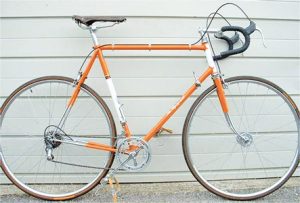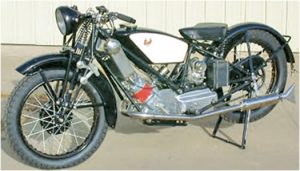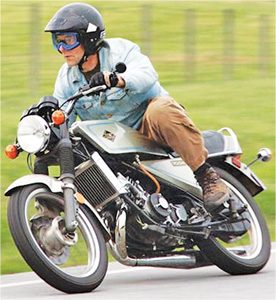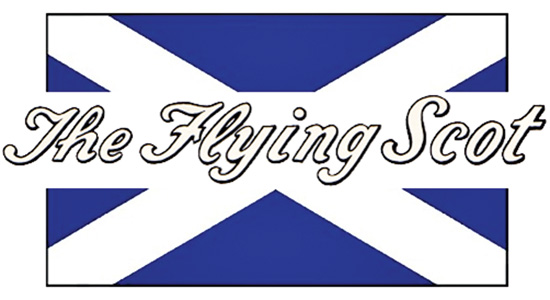 The Flying Scot: As the previous millennia turned, a premier lightweight bicycle manufacturer lay its foundation to what later came to be known as Scotland’s finest- ‘The Scot’, better known as ‘The Flying Scot’.
The Flying Scot: As the previous millennia turned, a premier lightweight bicycle manufacturer lay its foundation to what later came to be known as Scotland’s finest- ‘The Scot’, better known as ‘The Flying Scot’.
The brother-sister team, David and Agnes Rattray, began the 83-year-long era under the David Rattray & Co. Ltd. name, by producing hand-crafted bicycles in Glasgow, Scotland. As the years went by Scot’s fame grew. Such widespread was Scot’s reputation for lightweight racing and touring frames, that many professional/club racers converged at the shop to buy and race one of these hand-crafted bicycles.
After David Rattray’s passing in 1950, the company was run by his partner Jack Smith. Jack developed the business beyond the home market, with a steady demand from ex-pat customers ordering Scot’s, in particular, to Canada, USA and Australia. Rattray’s also became a wholesaler selling Scot frames to other bicycle vendors around Scotland and England.

The biggest contributor to the myth about David Rattray’s ‘Flying Scot’ is that it’s named after the 1923 built famous steam engine – The Flying Scotsman. In 1934, Flying Scotsman was the first steam locomotive to achieve a speed of 100 mph.
There were some popular models like Continental Supreme, Continental Model and Queen of Scots for the ladies-style frame. Customization being one of the USPs of Rattray’s bicycles, the likelihood today, of finding two standard bicycles having the same specifications is remote. Much of this is a direct result of the constantly changing specifications and fashions, as the Scot marque evolved alongside current cycle technology, and customers’ demands. Over the years, thousands of frames and complete bicycles were produced at Glasgow. All were built to the same high standard – from club machines to full-fledged racers. Each frame was hand built with the same care and attention, the like of which modern technology can never replicate. In 1983, Rattray’s legendry ‘Flying Scot’ became an integral part of bicycle history.

The Water-Cooled Wonder: No, this Scott is not Scottish – it’s but a true-blooded Brit from Shipley in Yorkshire. Alfred Angas Scott (1874 – 1923), pioneer of the Scott Motorcycle Company, in 1908 patented the ever-so-familiar two-stroke, twin-cylinder, water-cooled engine and the typical chassis. Such was the core engine design that it remained relatively un-evolved over the next 70 years, barring some changes like the gearbox and from magneto to alternator.
In 1910, Scott was the first two-stroke motorcycle ever, to complete the Isle of Man Tourist Trophy (TT) race. Rider Frank Phillip achieved the TT lap record of 50.11 mph continuous average speed in 1911. This winning streak continued with Scott’s being the fastest machines from 1912-14, as well as winning the event in 1912 and 13.
In fact, so powerful were the early Scotts that their cubic capacity was multiplied by a factor of 1.32 for competitive purposes at the TT against the four-strokes of yore. Despite this handicap, Frank Applebee won the 1912 TT on a Scott motorcycle making him the first in the world to win on a two-stroke – as well the first winner to lead the entire race! This historic TT win, coupled with the fact that Scott motorcycles were handicapped in racing because they were ‘too fast’, may have worked in Scott’s favour and sales subsequently rose to 550 a year.
In 1922, Scott introduced the popular ‘Squirrel’ 500cc, followed by a 500 / 600cc ‘Super Squirrel’ in 1925 and later the ‘Flying Squirrel’. The model name ‘Squirrel’ was for decades associated with Scott, since 1921. Around 1934/35 the Scott three cylinder motorcycle made its debut in the form of a water cooled 750cc machine, which was later bumped up to 1000cc. Yet another example of innovative engineering by the Scott company.

In 1950, the company was acquired by Matt Holder of Aerco Jig and Tool Company, Birmingham.
The first ‘Birmingham’ Scott rolled off the production line in 1956 with a 596cc 20bhp model with a duplex frame, telescopic front fork and swinging arm rear suspension. This bike carried on in production until the early 70’s, still featuring some of the characteristics of the original model.
In the mid-70’s GeorgeSilk (the Silk cigarette manufacture)took over Scott and launched the Silk 700S in 1975 which remained in production till 79’. It featured the chassis made by the famous Spondon Engineering along with the relatively unchanged engine design. It must have been quite sprightly considering it weighed only 141kg and had an engine output of 653cc / 54bhp. A proper ton-up machine, it had a top speed of 110mph. The Silk 700S was also one of the most expensive production motorcycles of its time. Light weight and a great chassis were not enough to compete against the efficiency of the Japs, and the ‘hand built’ production line came to a standstill in Dec’79 after having sold only 138 Silks.
Scott’s two-strokes were not screamers with a high power band but more principally worked on torque. As a two-stroke enthusiast, it’s a shame they didn’t trickle down to our country in the era gone by. In foreign lands, they still have a loyal following amongst the vintage / classic motorcycling enthusiast who restore and ride them… A true ‘gentleman’s’ two-stroke indeed!
- મા તે મા બીજા વગડાના વા - 11 May2024
- સુધારેલ એસ ડી મોદી પારસી ગર્લ્સ હોસ્ટેલ ફરી ખુલ્યું - 11 May2024
- શ્રીજી પાક ઈરાનશાહ આતશબેહરામની 1304મી સાલગ્રેહની ઉજવણી કરવામાં આવી - 11 May2024
